
Buenos Aires, Argentina’s cultured capital, is many people’s favorite city in Latin America. With its thriving arts and music scene, feisty Latin character and fascinating history, Buenos Aires is a heady amalgamation of the old and the new
Its rich past is very much apparent in the city’s beautiful architecture with streets of French-style apartments, opulent palaces, grand plazas and parks right across the city. There are also a whole host of museums and sights to explore and a fantastic literary and café culture.
Exciting and cosmopolitan, Buenos Aires is arguably one of the most 24-hour cities on the planet. However, nocturnal city life is not the sole territory of the young, and you’ll often find people of all ages out walking their dogs at 1am, grabbing a coffee and a chat in a local café or a midnight ice cream. Though Argentina is rightly famous for its beef, and the traditional Asado (BBQ) is a way of life here, steak is not the only thing on the menu, and there is a thriving and varied restaurant and café scene. Art and music are the heart and soul of the city and every other porteño (Buenos Aires local) is either an artist or a musician.
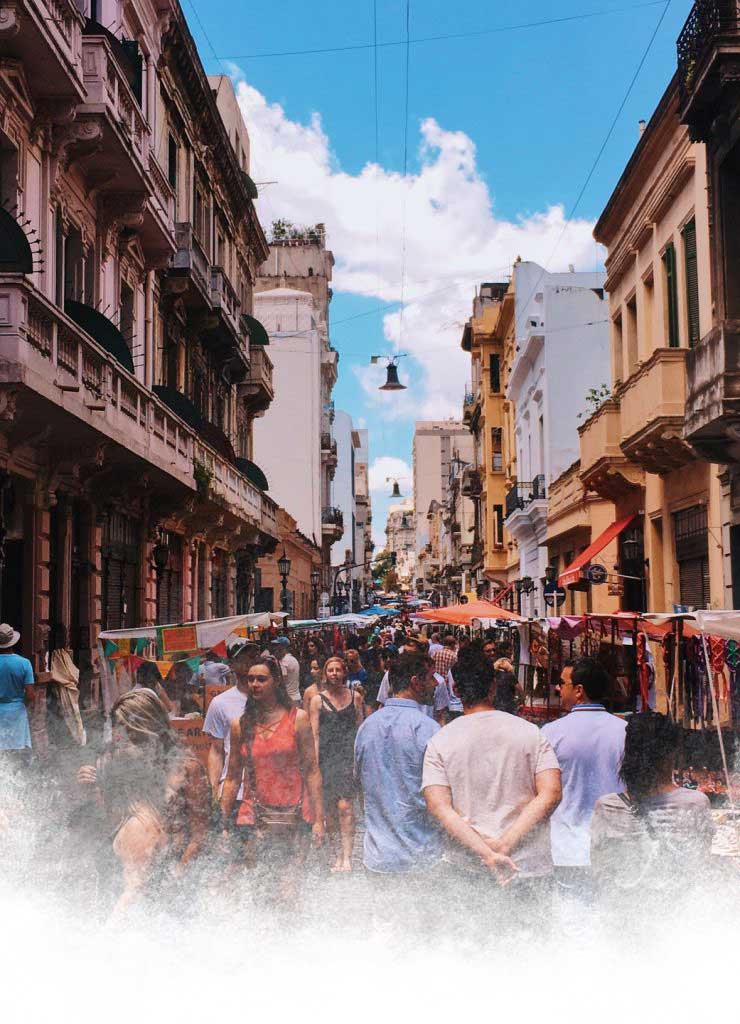
COSMOPOLITAN CULTURE AND CHARACTER
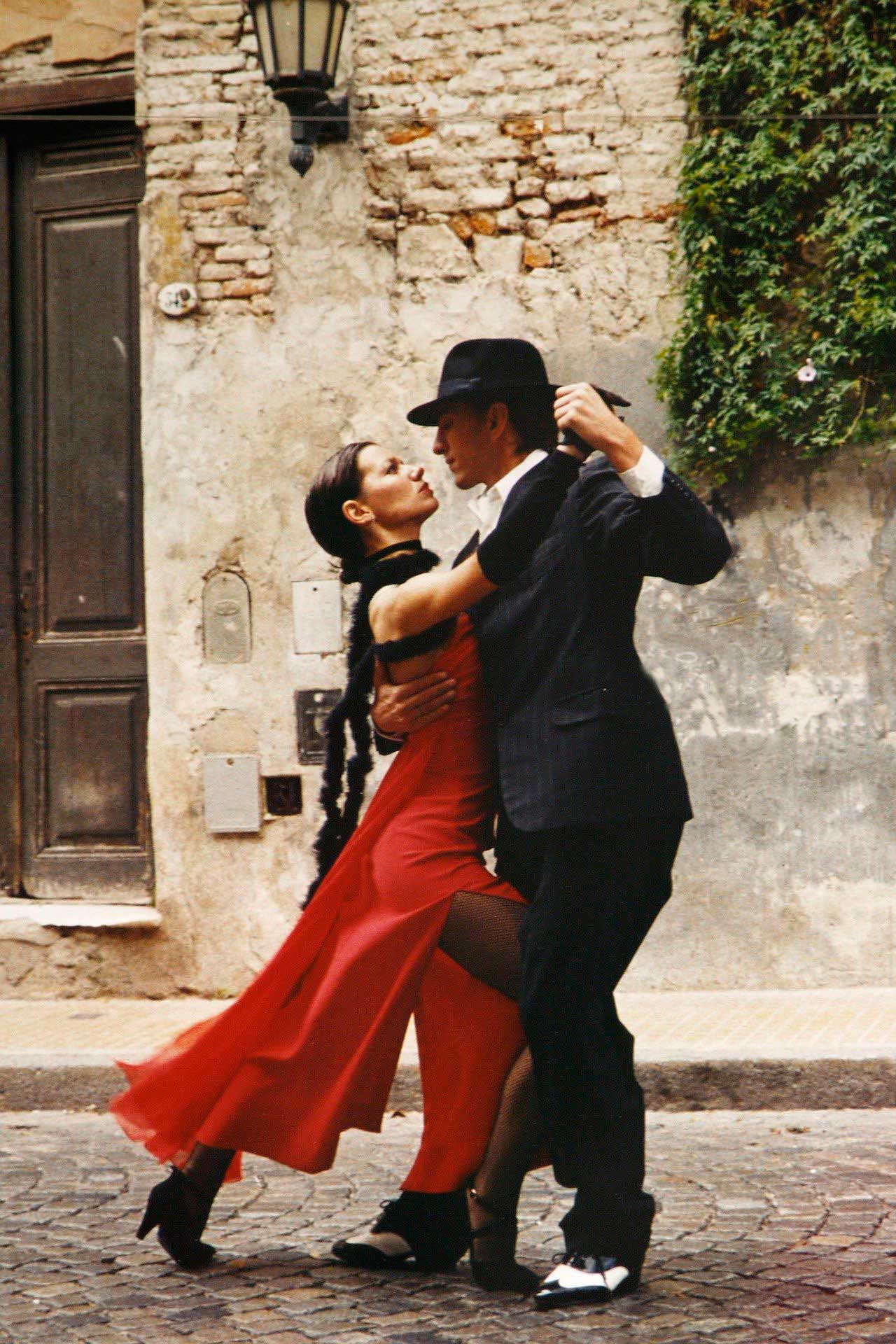
Though there are musical styles to suit absolutely every taste, the one that is synonymous with Buenos Aires, and which fascinates and seduces many, is of course the tango. An authentic and inclusive tango scene is very much alive and high kicking in the city, with young and old, locals and visiting enthusiasts, all taking the floor together, and the international and gay tango festivals held in Buenos Aires every year.
build your clients trip with our experts


WHAT NOT TO MISS IN BUENOS AIRES
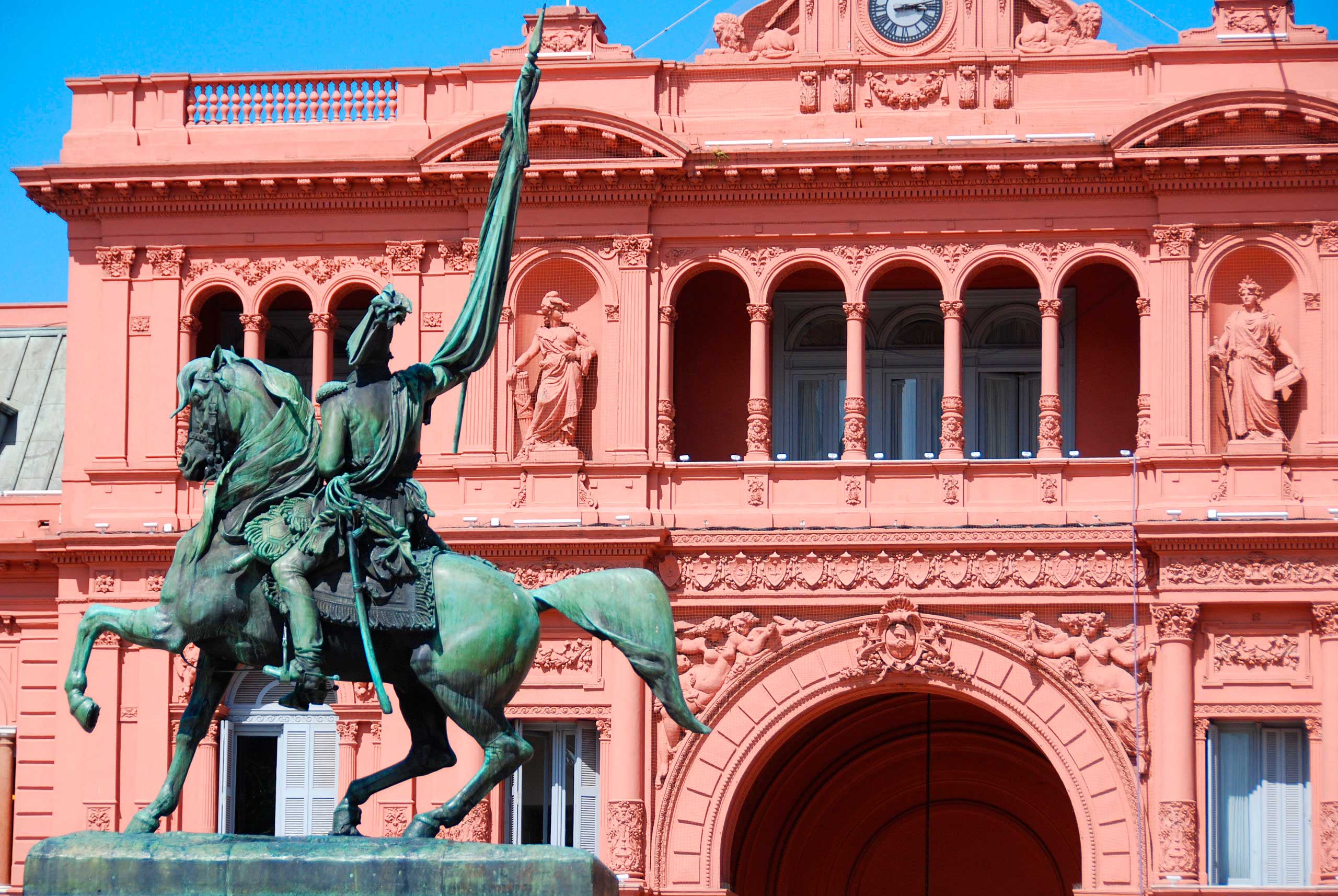
Plaza de Mayo
The heart of the city is the Plaza de Mayo (May Square), surrounded by the Casa Rosada (Government House), the Metropolitan Cathedral and the Cabildo (City Hall during the Spanish colonial period). This is a popular spot for social demonstrations, which still happen every once in a while. For the most part it is center to all important neightborhoods of Buenos Aires, and draws people from all over the country.
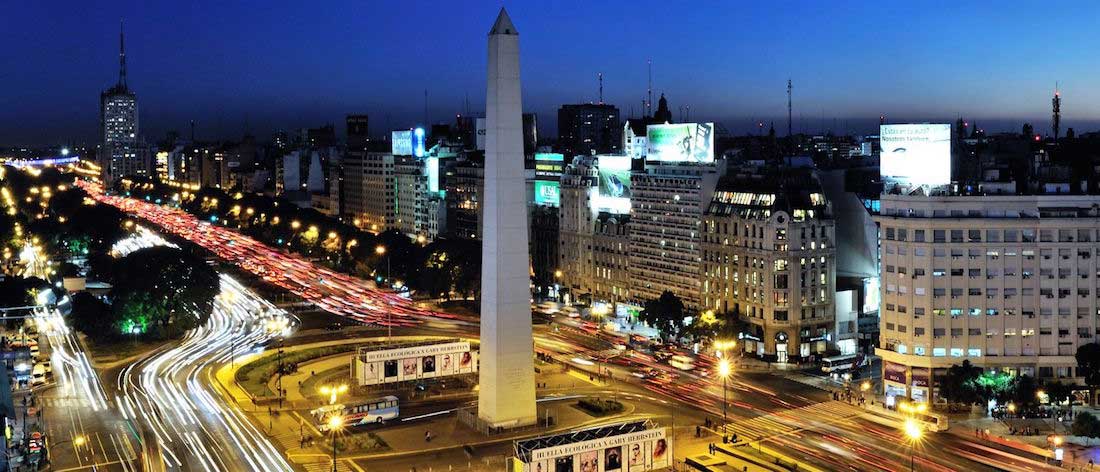
Obelisk
The iconic Obelisco in Buenos Aires is situated at the intersection of two of the city’s most important streets: Avenida Corrientes and Avenida 9 de Julio, the widest street in the world with an incredible 16 lanes. The monument was erected in 1936, today, during important festivals and holidays, the government also decorates it as a memorial. A Christmas tree, a pencil for the Noche de los Lápices, and the giant pink condom were decorated to celebrate the AIDS Day.
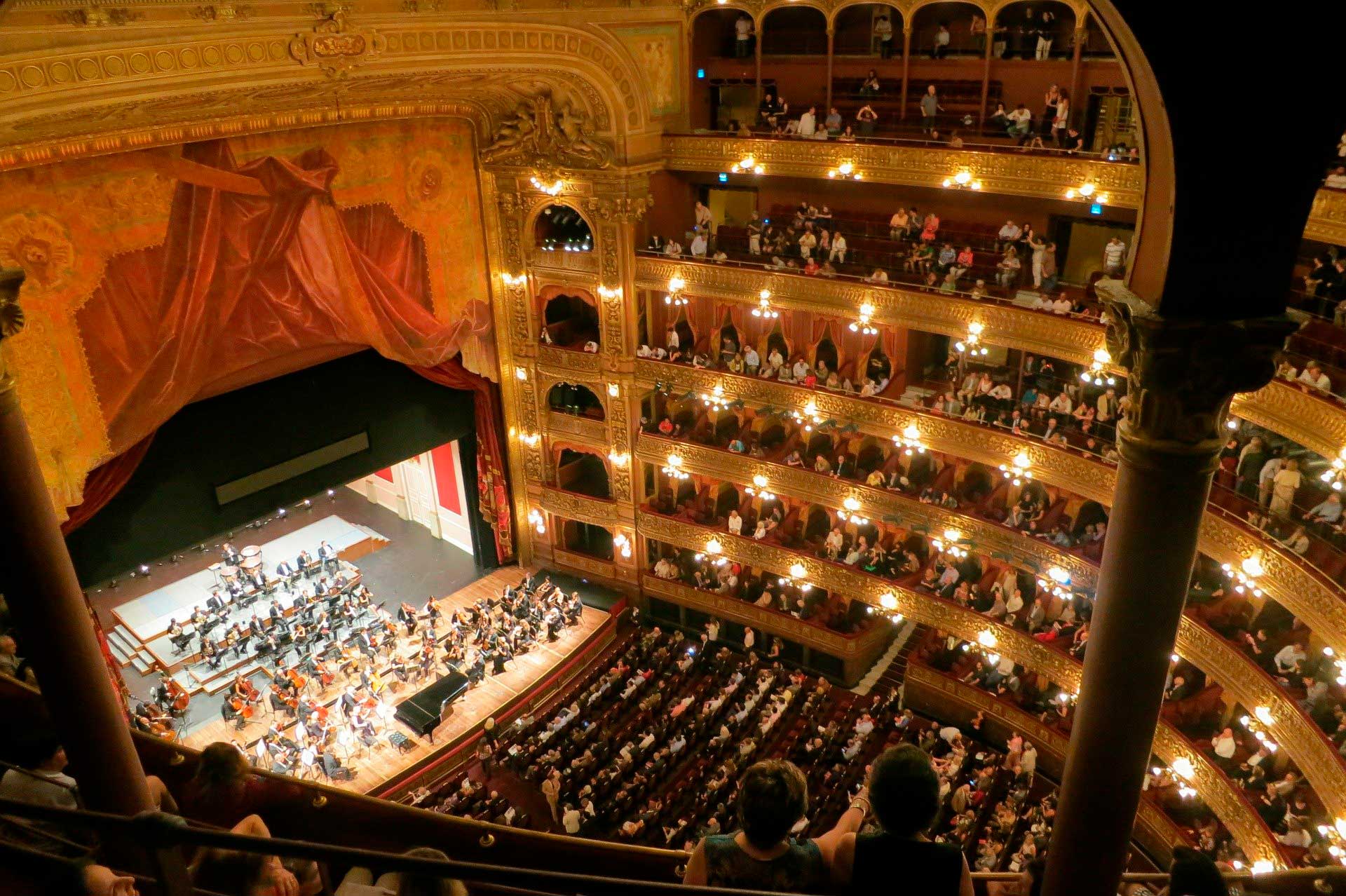
Teatro Colón
The opulent Colon Theater Opera House is a grand construction with a stunning interior and boasts some of the best acoustics in the world. A program of opera, ballet and classical music runs throughout the year and tickets can be bought online or at the box office with prices to suit any type of ticket carrier. It was renovated in recent years, definitely worth the time to explore even if only during the day, coupled with a visit to the famous Ateneo book store in the neighborhood.
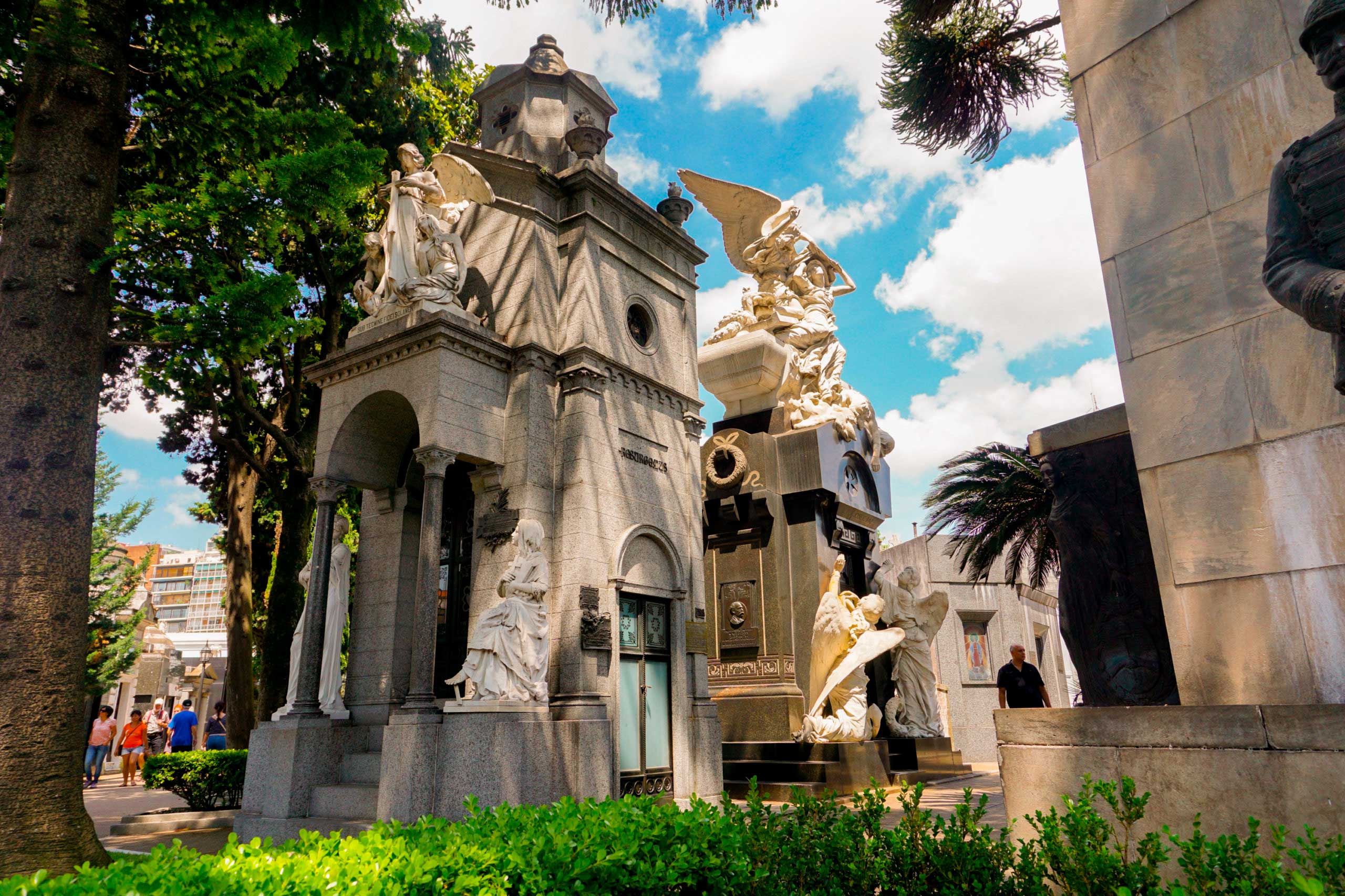
Recoleta
This neighborhood is home to the famous Recoleta Cemetery where many of the country’s most influential leaders have been laid to rest, including Evita Perón. The architecture and distinct shopping flare of the area give it a interestingly European feel. The impressive Bellas Artes Museum, along with others straddling with Palermo are wondeful. It’s a nice location being at the nexus of the cities most interesting attractions.
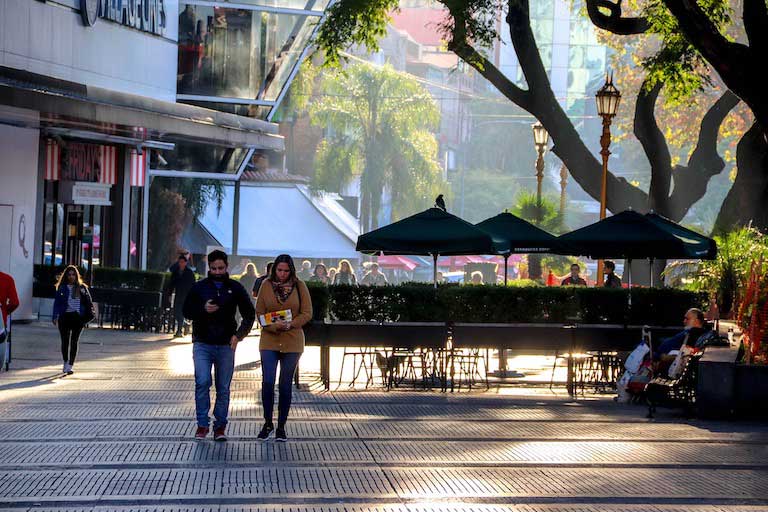
Palermo
Palermo is home to some of the most fashionable boutiques and restaurants in the city, and is a hot-spot for nightclubs and bars. It is a culturally rich area with many small galleries, live music venues, and the beautiful Botanical Gardens. Both walkable and safe, Palermo is a great area to hang your hat for a few days in “BsAs”, and is subdivided into Palermo: Soho, Hollywood, Viejo, Chico, etc. Get lost, it’s lovely. Each of which has it’s own style and character.
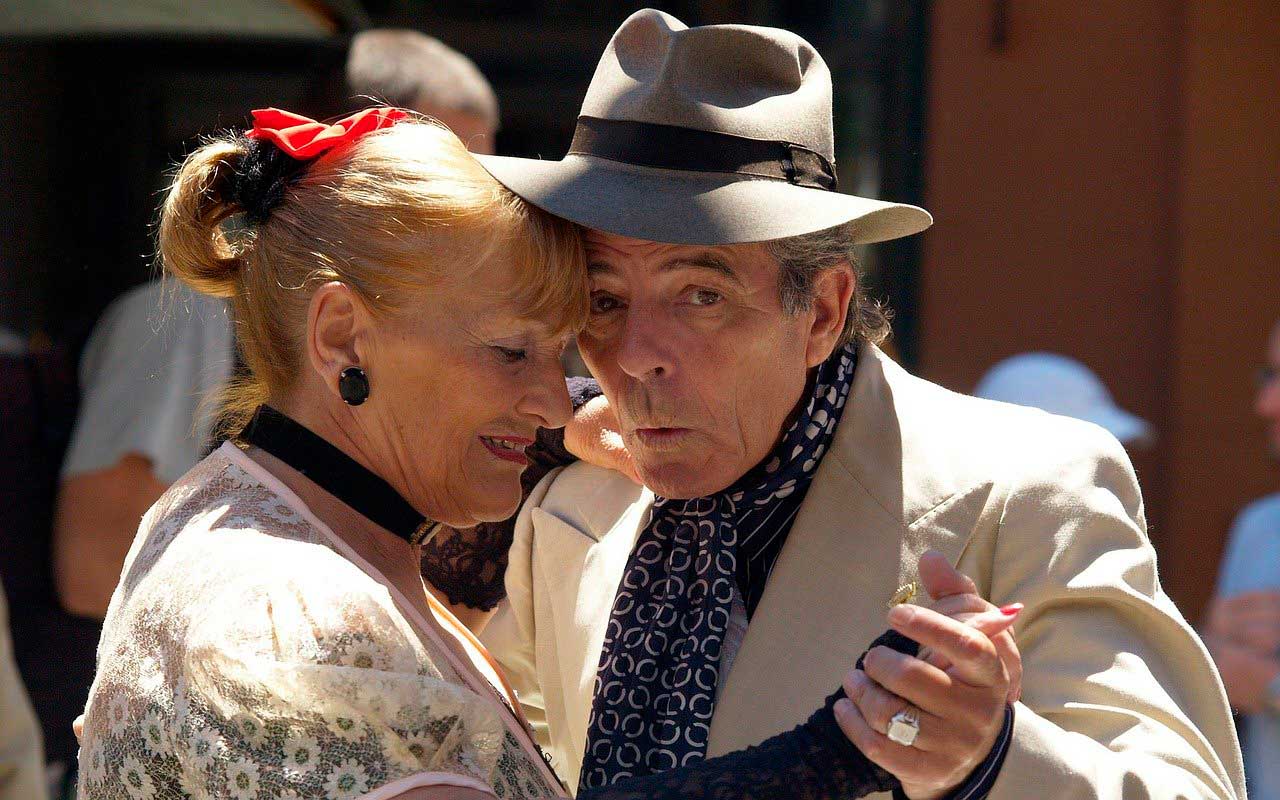
San Telmo
San Telmo is one of the oldest neighborhoods of the city, in recent years it has been transformed into a vibrant cultural hub. A massive antique market takes over the cobblestone streets of the neighborhood each Sunday. Home of tango and many cafés, street performers twirling in its narrow streets. If staying in San Telmo, it’s its own little world, so take time to wander the streets, tango, and escape to the more bohemian district of this bustling city.
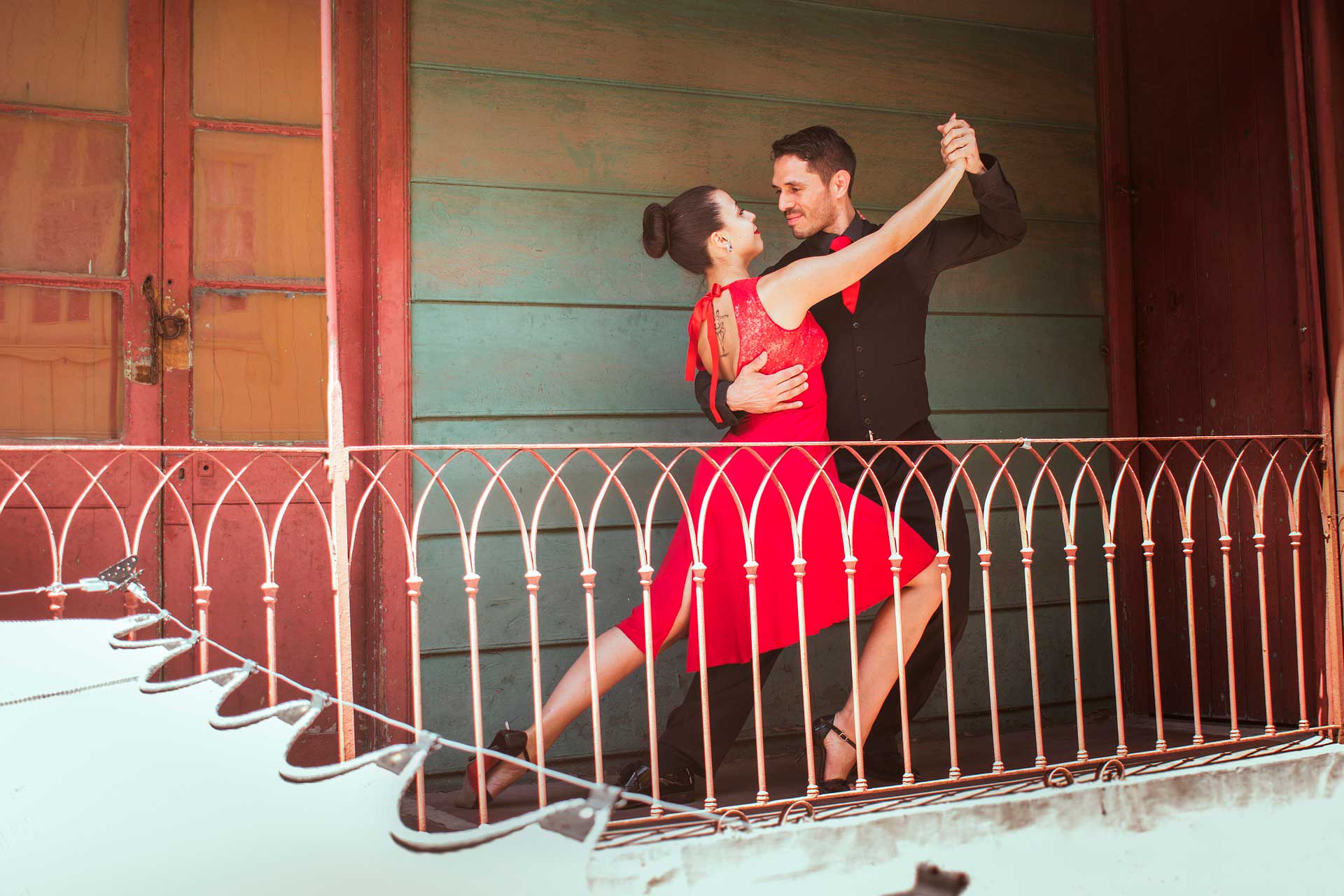
Tango
Getting a taste of the tango scene in Buenos Aires is an absolute must. Wether you catch a sit-down show, stop to admire a steet performance, or go underground in one of the many late night milongas, be sure to cathc a glimpse of this integral part of the city and its people. Whether you find yourself exploring a hip “milonga” like Catedral, more traditional milonga clubs, or enjoy the tango show for performances that range from sexy to sophisticated.
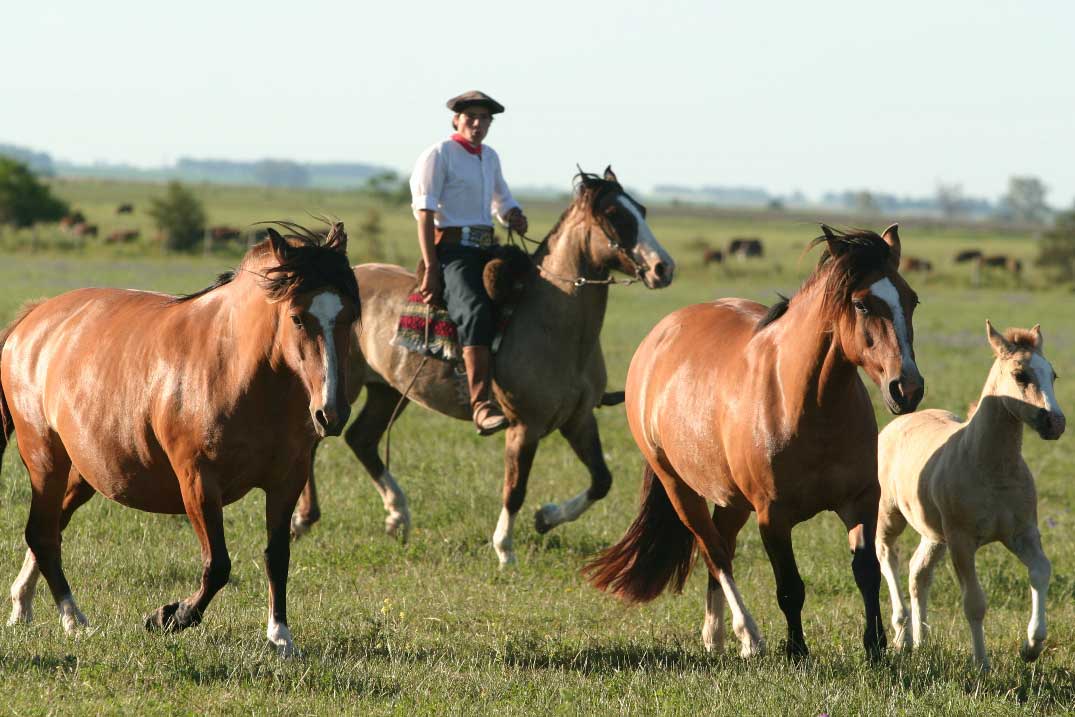
San Antonio de Areco
The gaucho is to Argentina what the cowboy is to the United States. These are the men who live on estancias (ranches), away from the big cities and work in agriculture and cattle breeding. In Argentina, most of the gauchos lived and still live in the Pampas, on the outskirts of Buenos Aires. Areco is only an hour or so outside of the city, we have a handful of diamonds in the rough, great option for family or romantic getaways for a full day activity, or weekend experience getaways.
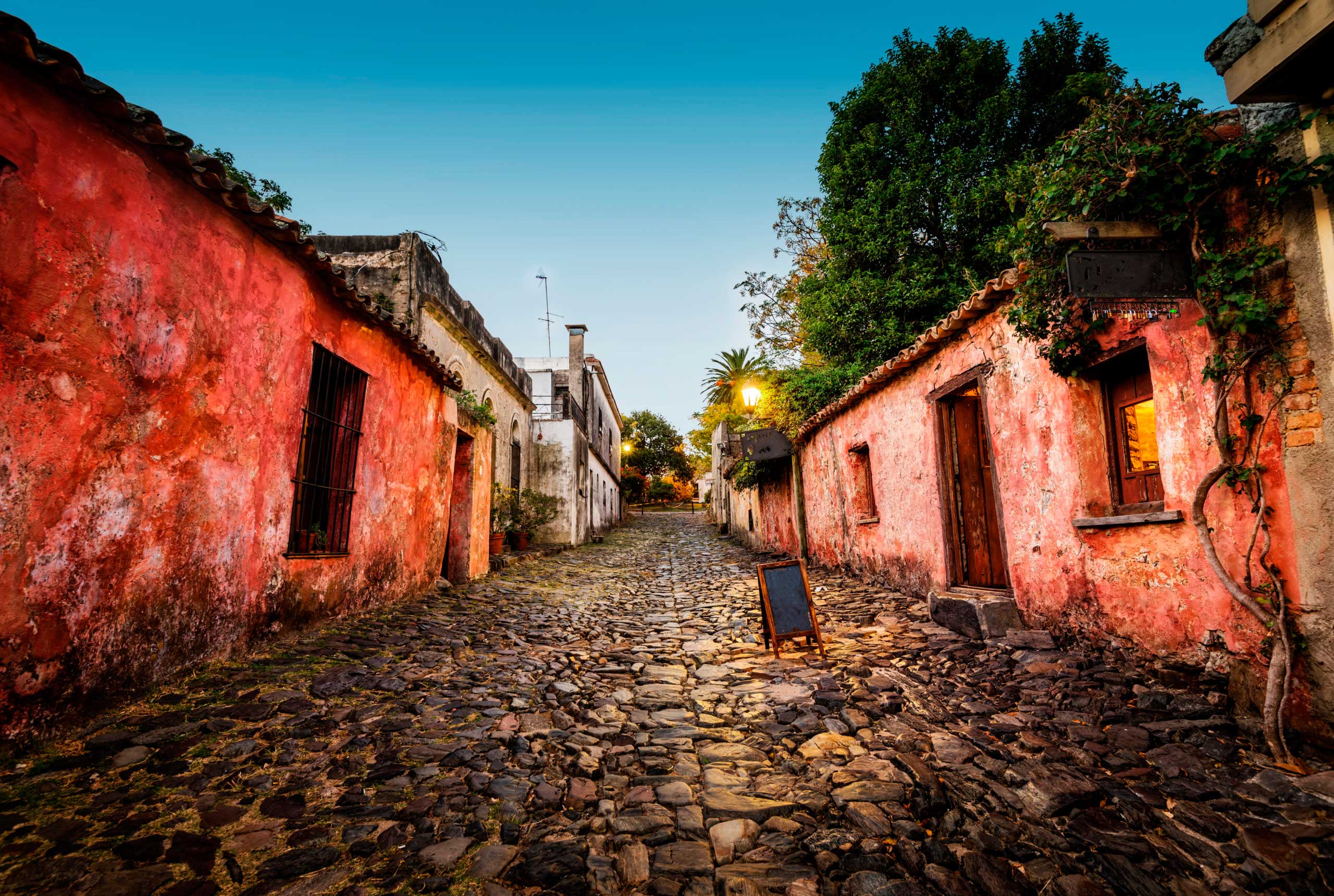
Colonia – Uruguay
One of the most pleasant little secret getaways you can make from the bustling city of Buenos Aires, is taking a quick hop opposite Argentina of the Rio de la Plata (River Plate), is a little pueblo called Colonia del Sacramento, on the Uruguayan coast. It’s streets charming and almost painted, few restaurants scattered or get lost in the cobblestone streets and art galleries. It’s a bit more than a stone throw, but well worth the encounter…what about Uruguay?
destination map

| Title | Address | Description |
|---|---|---|
Buenos Aires | Buenos Aires, CABA, Argentina | Argentina’s cultured capital, is many people’s favorite city in Latin America. With its thriving arts and music scene, feisty Latin character, fascinating history and, stunning architecture; the city is filled with a rich past and an equally as captivating present…Read more… |
Patagonia Glacier National Park | Parque Nacional Los Glaciares, Santa Cruz, Argentina | This UNESCO World Heritage Site has some of the region’s most dramatic scenery. Embark on a boat trip passing shimmering icebergs or, hike across the mighty Perito Moreno Glacier in South America’s kingdom of ice and glaciers! Read more… |
Iguazu Falls (Puerto Iguazu) | Unnamed Road, Misiones, Argentina | Named one of the New 7 Wonders of the World, Iguazu hosts over 250 separate falls thundering down from heights of up to 269ft. (82m), a truly inspiring experience. These giant falls can be visited from both Argentina and Brazil, both offering their own unique perspective.Read more… |
Peninsula Valdes | Península Valdés, Chubut, Argentina | This area of Patagonia is haven for a whole host of marine wildlife and birdlife. Its sheltered bays offer a safe breeding and feeding ground for fascinating wildlife, including sea lions, elephant seals, penguins, dolphins and, most impressively of all, the giant Southern Right Whale.Read more… |
Ushuaia | Ushuaia, Tierra del Fuego, Argentina | The last point of civilization before the frozen stretches of Antarctica take hold, Ushuaia is an attractive and colorful coastal town at the end of the world. Be spoiled by its surrounding beautiful landscapes and the vast National Parks of Southern Patagonia. Read more… |
Mendoza | Mendoza, Capital, Mendoza, Argentina | This corner of the world is the perfect climate for wine growing, especially the Malbec grape. You won’t want to miss at least a few days visiting some speciality boutique vineyards, or more renown brands. There’s also plenty of adventure outdoor activities abound.Read more… |
Salta | Salta, Argentina | Salta’s attractive colonial architecture effortlessly lives up to its nickname, La Linda, meaning ‘the beautiful’ in Spanish. It’s without a doubt one of the most well-preserved colonial cities in Argentina and the perfect base to visit the rest of northwest highlights of Jujuy & Cafayate.Read more… |
Jujuy Province | San Salvador de Jujuy, Jujuy, Argentina | Jujuy Province (pronounced hu-hui) has some of the most stunning landscapes in all of Argentina. One day’s drive will take you through 400 year old cacti forests, beautifully preserved colonial villages, expansive salt flats and rocky mountain faces swirled with a rainbow of colors.Read more… |
Cafayate | Cafayate, Salta, Argentina | Home to the Torrontes vineyards, Cafayate is unique in its production of a refreshingly light white wine. This charming colonial town has a lovely laid-back and small-town feel with a pleasant central plaza where you can dine al fresco on regional specialties.Read more… |
Lake District & Bariloche | San Carlos de Bariloche, Río Negro, Argentina | Salta’s attractive colonial architecture effortlessly lives up to its nickname, La Linda, meaning ‘the beautiful’ in Spanish. It’s without a doubt one of the most well-preserved colonial cities in Argentina and the perfect base to visit the rest of northwest highlights of Jujuy & Cafayate.Read more… |
Depending on your client’s preferences, we can help you determine the best experiences tailored for your clients. From where to visit, when to go, what to do and how to get there safely, our travel experts will help you create an experience your clients will love.
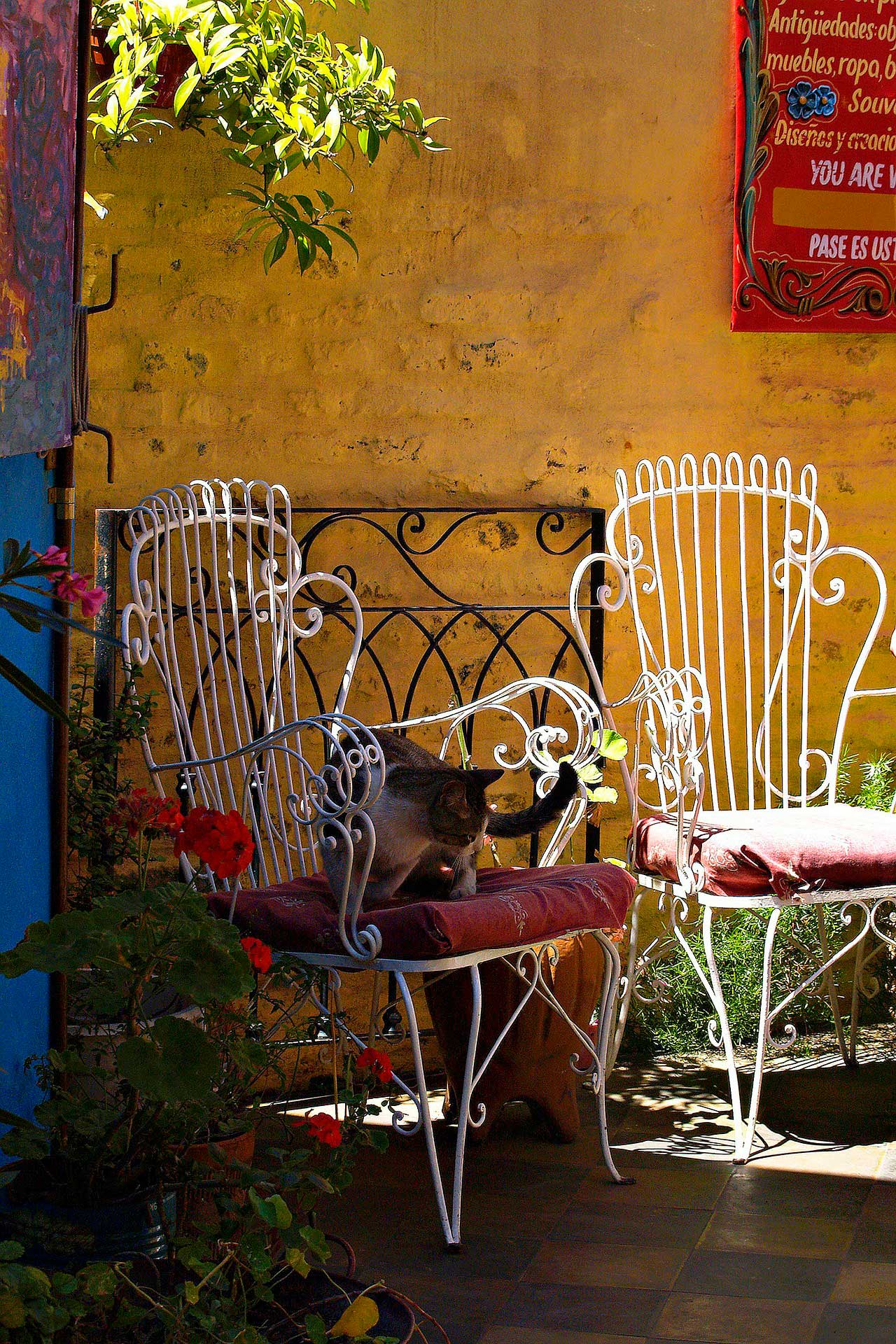
Best times to
visit buenos aires
Buenos Aires can be visited at any time of year and there is plenty to do rain or shine. However, in the height of summer (January-February) it can get very hot and humid and this is when many of the locals head out of town to the coast. For those who stay, the city government organizes a calendar of free music, arts and cinema events in outdoor venues across the city. Perhaps the best time to visit Buenos Aires is spring-time and early summer (October-December), when the trees are in blossom, skies are blue and alfresco dining can be enjoyed to the fullest. The winter months can get nippy, but skies are often blue. If you’re a tango enthusiast, there is an international tango festival and contest in August.

practical information
HOW TO GET THERE
Buenos Aires is accessible by plane through two airports: Ministro Pistarini Airport (better known as Ezeiza airport), which is about 22 miles (35 km) away from the city and it’s where international flights arrive. The other one is the Jorge Newbery Airport (better known as Aeroparque), located downtown, where domestic flights and flights from Uruguay arrive.
If you come from Uruguay, a quick way of reaching Buenos Aires is through ferry boats that take three hours at the most. The port of Buenos Aires also receives each year almost 90 cruises that sail around South America.
Buenos Aires is also reachable by buses that arrive from all other local cities and bordering countries.
GETTING AROUND ARGENTINA
Argentina is BIG; it stretches over 2,175 miles (3,500 km) from north to south. The distances that you’ll need to travel if you want to see all of its incredible sights are pretty hefty. For that reason most people take an internal flight or two in order to save time and avoid lengthy journeys by road.
Having said that, Argentina does have an excellent long-distance bus service and, although it may sound a lot, a twenty hour bus journey is perfectly manageable. Long-distance buses in Argentina come in various levels of comfort, but you won’t pay too much more for a fully horizontal bed and waiter service. Hot meals are served on board and it’s a great opportunity to see some of Argentina’s beautiful countryside or to get an idea of the vastness of the plains of Patagonia. In some regions, such as the Northeast or the Patagonia Lake District, it’s a great idea to hire a car and drive through their stunning landscapes independently.
WHERE TO STAY
As with every big capital city, Buenos Aires has a wide range of options in lodging, so you should have no problem in finding a place to feel comfortable.
The world’s most well known five-star hotel chains are present downtown, together with other local luxury hotels. You may also find lots of lower rated hotels all around, small boutique hotels and hostels. Renting a house or an apartment is probably the cheapest choice.

more highlights of argentina
With eight local offices in Latin America, we have the perfect base to help you build the perfect trip for your clients. Unrivaled experience with a wide selection of bed & breakfasts, small posadas, unique boutique hotels and world class luxurious lodging.
